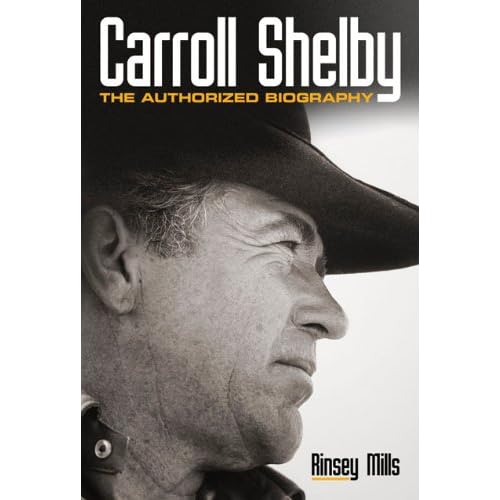Carroll Shelby died May 10,
2012, at Baylor Hospital in Dallas at the age of 89. It will take years
to assess his impact on the car racing world and automotive world.
Fans of his collaborations with Ford were happy to see Shelby get back together with Ford. It was a long time coming, and surprising in that most men his age would have long since retired to the rocker on the porch. But, no, Shelby perserved--even having a heart and kidney transplant to keep going--so that the modern Shelby Mustangs are worthy of the name. Only a few months before he died, he saw the introduction of a 200-mph showroom stock Shelby Mustang. There were failures, oh, yes, big time failures like the Oldsmobile powered Series 1. And fights, those clone wars got nasty with suits and counter-suits. But the potential car builder in all of us hoped Shelby would prevail because, damn it, he was the one who honed the original ideas only to have them stolen when he was busy elsewhere. Trying to keep up with his other activities was impossible--you check cattle ranching, horse breeding, chili mix production, you find Shelby mentioned here and there and everywhere. Like Pete Lyons wrote "In every field that caught his interest, he was able to exercise a powerful combination of intelligence, curiosity, vision, timing, guile, cunning and charm, plus what he described as 'the work ethic.' "
There are lots of other car companies that made interesting products, but none of them had a leader who is even one-tenth the exciting personality of Shelby. And his former employees, who met annually at this event or that, seemed to like remembering working for The Man, as the highlight of their working lives. No doubt they scratched their heads whenever they read about Shelby's latest activiity. Here he was older than them, and by all rights should be retired, but no, he was out there shaking up the troops. I think those who read about Shelby's life will discover a lot to emulate--the way he would learn European courses so well that, 50 years later, he could remember each turn in the Mille Miglia. The way he supported young men with their ideas, even if he wasn't sure if they could do what they claimed (case in point--Pete Brock's design for the Cobra Daytona coupe). By far the most fun in reading about Shelby is the "merry prankster" aspect to it all, the way his crew lived it up when they went to race, and partied hardy, but still won the races. It's like reading about Robin Hood and his merry men. They had fun, and lived life to its fullest. And, as far as drama for a story, you don't get any better in talking endurance racing of the '50s and '60s than Shelby vs. Enzo Ferrari. The Ferrari people still like to pretend that Shelby was no threat but, for a few years there --say '65-'67-- Shelby managed to wrest away the mantle from Ferrari, and for that sports car fans who aren't die-hard Ferraristi are grateful. As far as how Shelby changed the car world, I believe his driving school was one of the first for high-performance driving. His going into cast wheels for cars and motorcycles showed his prowess as a manufacturer. But the most important thing was proving that an American-engined sports car could conquer those fancy European sports cars where you had no parts and had to learn the language of your foreign mechanic. His charity giving programs have had some ups and downs but suffice to say that heart funds and vocational education have received monies.Shelby's survivors consist of his wife, Cleo Shelby; his sister and only sibling, Anne Shelby Ellison; daughter Sharon Lavine and sons Michael and Patrick Shelby (all three from his first marriage to Jeanne Fields); six grandchildren; and four great-grandchildren. With Carroll Shelby's death, an era has ended. And I, for one, will lament that the car world is duller for it. We are back to the machines, but machines are not interesting if there is not an interesting creator behind them...
~~~~~~~~~~~~~~~~~~~~~~~~~~~
Wallace Wyss is the author of SHELBY: The Man, The Cars, The Legend(Iconografix, 2007)
